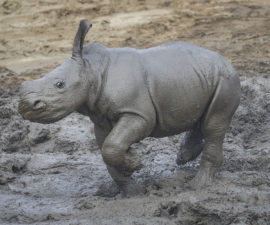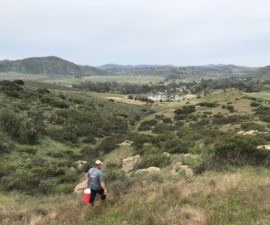BY Karyl Carmignani
When developing ways to track animals in the field, the goal is to create data-collection mechanisms as tiny, lightweight, durable, and unobtrusive to the animal as possible, while still harnessing much-needed information about the animal’s home range, migration routes, and how they use the landscape. Advances in satellite transmissions have revolutionized wildlife tracking, but the size, weight, and efficiency of the batteries can be limiting.
A satellite-based tag, like a Global Positioning System (GPS) device, records and stores an animal’s geolocation coordinates at predetermined intervals. Data may be stored until the device (collar, tag, etc.) is retrieved, or the data are relayed to a central cache or computer. “Biologgers” may be added to the GPS mechanism, including devices that document light levels (for example, in or out of a den) and temperature, and accelerometers that record activity (essentially a Fitbit for animals). When looked at in concert, the data provides a more complete picture of what an animal is doing.

LIGHT AS A FEATHER
For the pint-sized burrowing owl, transmitters must be lightweight and the “backpack” secured carefully as to not impede the bird’s activities.
Fortunately, innovative technology has been on an upswing for the past decade, and that has helped researchers get a clearer understanding of their subjects. “Technology can allow us to gain a deeper understanding of animal lives, and can help us gain that understanding faster, which can be critical to conservation action,” said Megan Owen, Ph.D., director of Population Sustainability, San Diego Zoo Global (SDZG). “Because our world is changing so rapidly, we need to be able to respond in a relevant time frame.” Every species has its own requirements, based on body structure, size, weight, and ecology. From the use of tiny tags on mountain yellow-legged frogs released in icy-cold streams, to featherlight backpacks on burrowing owls dodging development, to sturdy, waterproof collars on polar bears roaming a vast, unforgiving habitat, our scientists are committed to deepening our knowledge and offering science-based solutions in the fight against extinction.
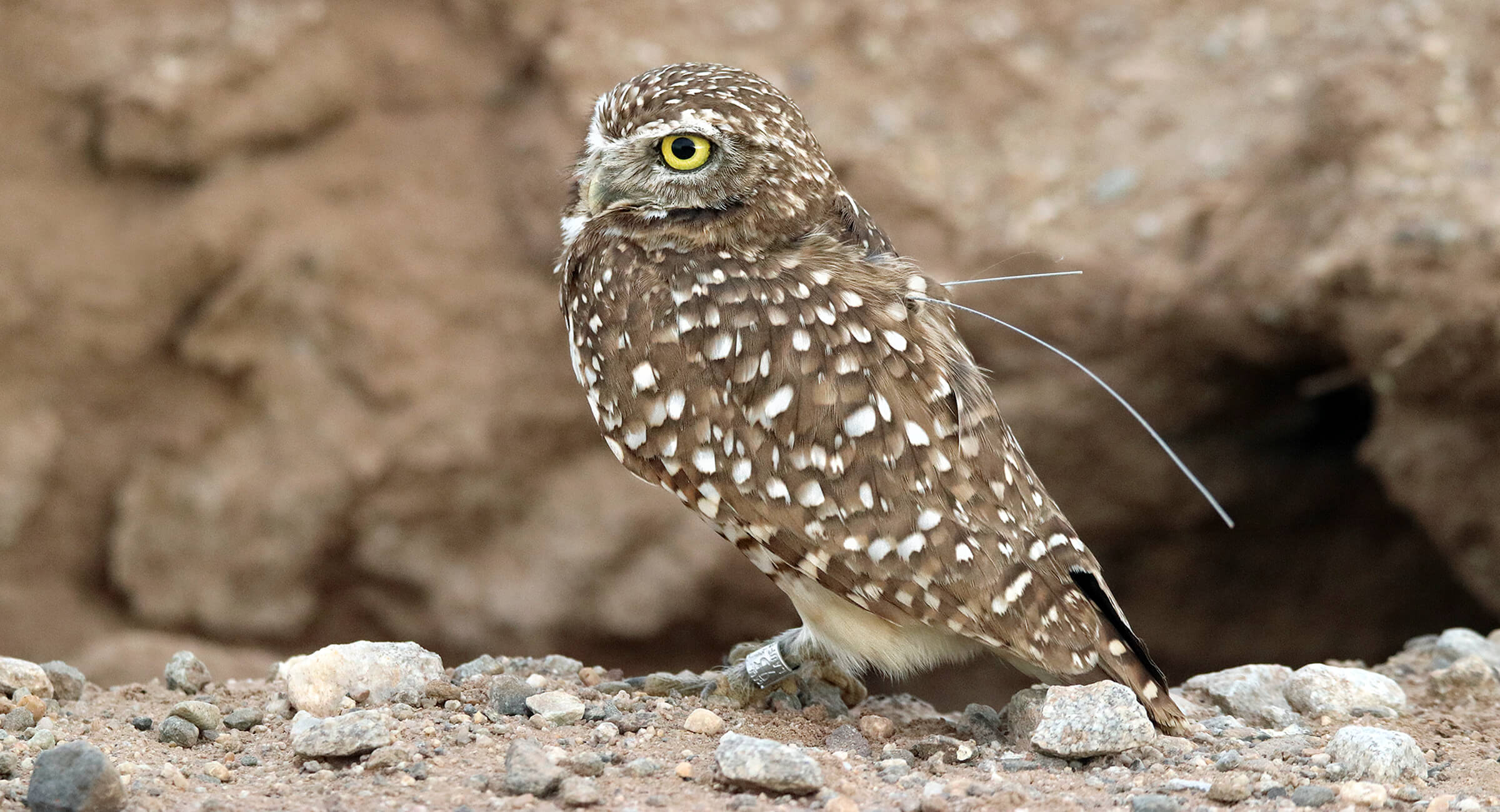
A Bird in Hand
Banding and tracking birds for scientific research and conservation projects has never been a one-size-fits-all endeavor—GPS tags have to be as versatile as the birds they are recording. California condors, for instance, get a patagial tag on a wing, as they are robust enough to fly with it. Whooping cranes get tags attached to one of their legs. The pint-sized western burrowing owl, which nests underground in Southern California’s native grasslands (often in the path of human development), gets a precisely fitted “backpack” containing a satellite GPS telemetry unit with a solar-recharging battery. The resulting data are crucial to better understand the owls’ movement patterns and survival following translocation.
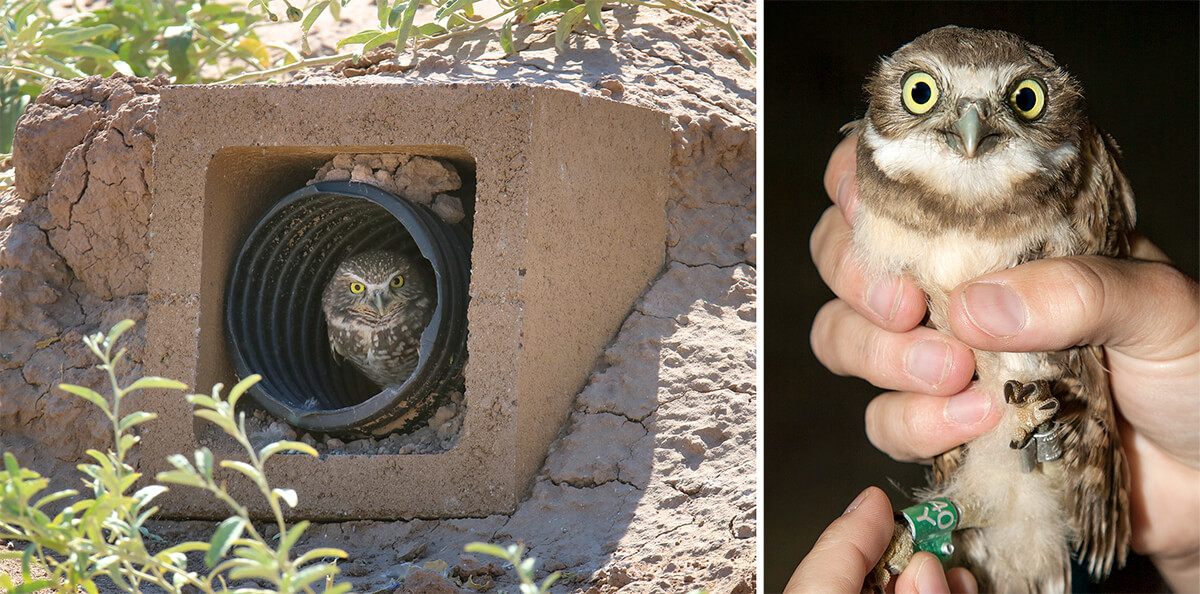
AN EYE ON OWLS
Artificial burrows provide shelter for burrowing owls. Some have field cameras set up outside the den to document what the birds are up to. Researchers identify individuals through the code on their leg bands.
But while there is ample sunshine in Southern California, there are still challenges with solar-rechargeable batteries on this species, explained Colleen Wisinski, conservation program specialist, Recovery Ecology, SDZG. “Burrowing owls spend a fair amount of time underground, which means less consistent data,” she said. “We carefully trim their feathers around the tiny solar panel, but after the owls molt, the new feathers may cover the unit.” Another challenge is the two antennas sprouting from the unit, required to send data points to the satellite. “Sometimes the birds are a bit annoyed at first, but the backpack quickly becomes part of their preening,” Colleen said. “Going in and out of their burrow also puts wear and tear on the unit.”
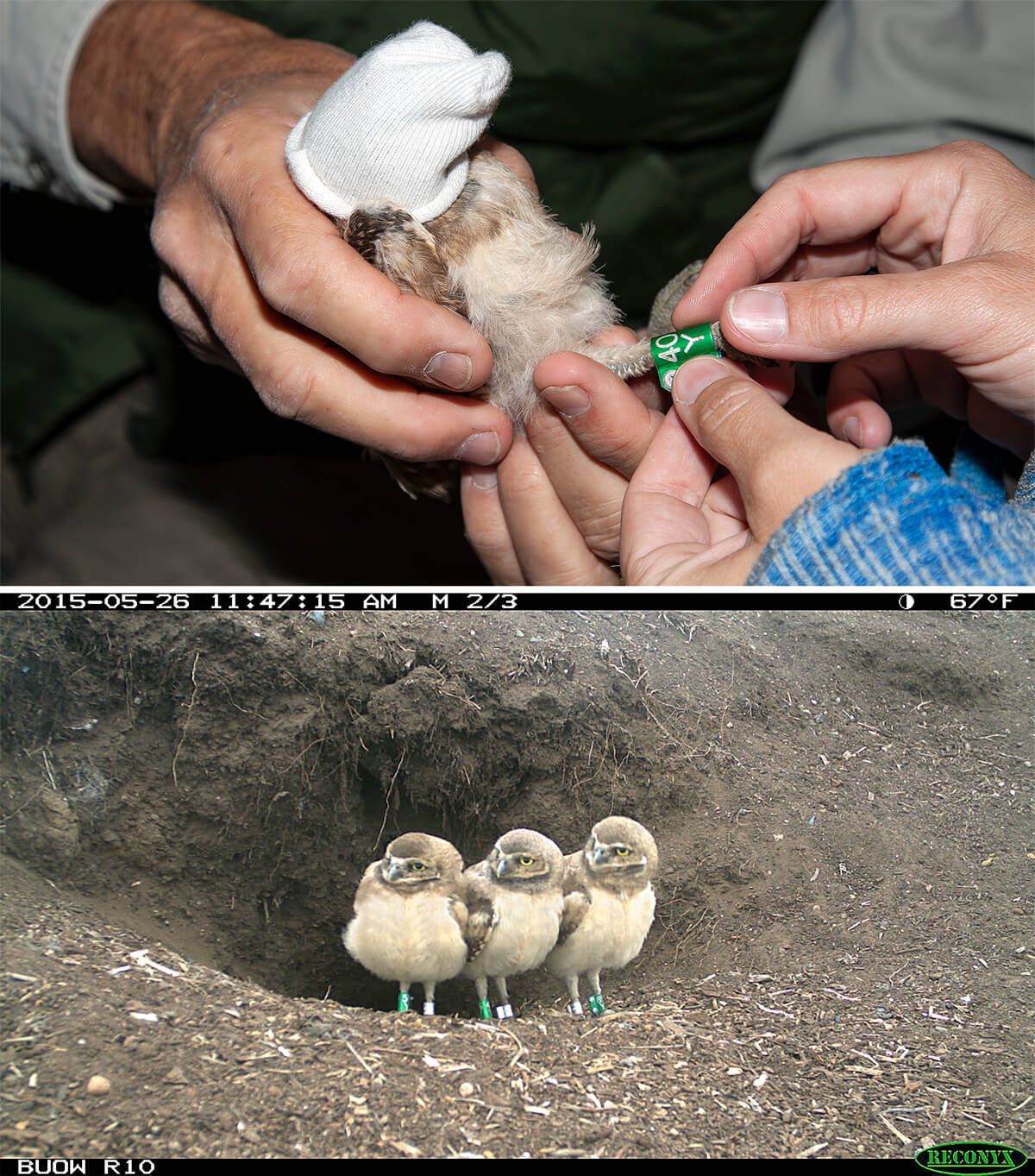
OH, BABY
Placing a baby sock on the bird instantly calms it down and researchers can tag the bird without undue stress. Field cameras set up outside burrows capture all sorts of bird behavior, like this trio doing synchronized gazing.
The general rule is for a transmitter to not exceed three to five percent of the bird’s body weight, to avoid negative impacts on its survival. For burrowing owls, that includes leg bands, the harness, and the unit itself. To shave off a gram, researchers switched to a ribbon made of Spectra, a light but durable monofilament fiber, for the harness. “It has to fit properly,” said Colleen. “It’s a Goldilocks situation—not too snug, not too loose, it has to fit just right!”
This element of stewardship is a responsibility Colleen and the team take seriously. For pairs that had to be relocated out of the way of development, the heavier of the two birds got the unit. But understanding the species’ ecology is an important part of determining how to deploy telemetry units and how to make sense of the data. A tracker on a female burrowing owl will go dark for a couple of months while she is incubating eggs and raising chicks in the burrow, so other tools are used together with the transmitters to keep tabs on what’s going on. “Since 2017, we’ve attached transmitters to over 70 birds in Southern California,” she said. This collaborative effort will help to develop best practices and effective mitigation methods to conserve burrowing owls across the region for generations to come.
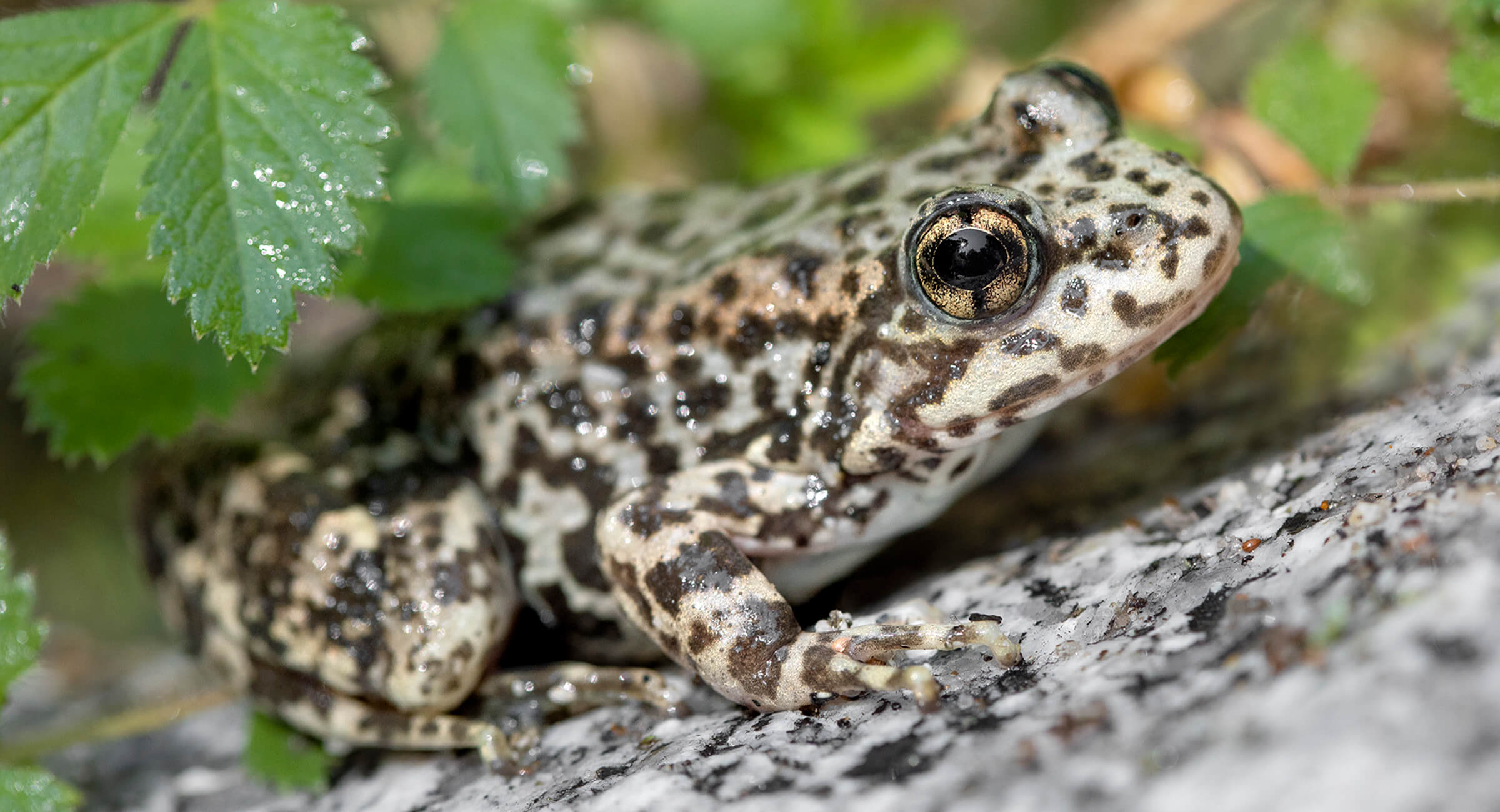
Giant Leap for Tiny Technology
For mountain yellow-legged frogs (MYLF), which were largely extirpated from their native streams in the San Bernardino and San Jacinto Mountains, cutting-edge microtechnology is a real lifesaver. In partnership with governmental and zoological organizations, SDZG has been working diligently to breed and release MYLF to repopulate their historic range. Over the past 14 years, breeding techniques have been refined—and successful. September 2019 was a watershed moment: 265 adult and juvenile MYLF and more than 680 pollywogs (tadpoles) were released.
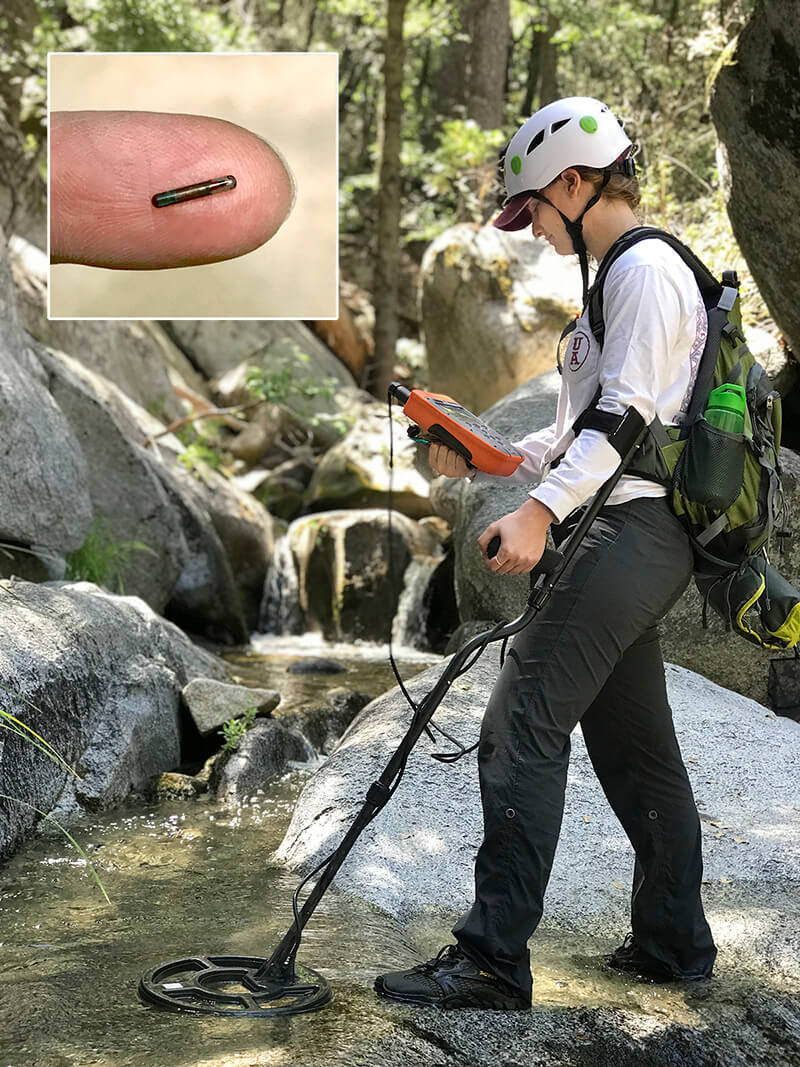
CHIPPING IN
Released mountain yellow-legged frogs (MYLF) were given a tiny microchip (inset). A generous grant allowed the team to purchase a new long-range, handheld microchip reader, which beeps when it detects a microchipped frog. This helps researchers locate frogs that otherwise may be hidden in the mountain streams. (Photos by: Tali Hammond)
The 265 frogs each had a passive integrated transponder, called a PIT tag, injected beneath the skin (similar to microchips in pets), providing a reliable “barcode” for individual animals. About the size of a grain of wild rice, this tag is readable up to about 12 inches away. “One of the most important stages of any conservation reintroduction program is post-release monitoring,” said Talisin Hammond, Ph.D., postdoctoral scholar, SDZG. “Releasing animals back into their habitat brings such a feeling of joy—it’s magical! But it’s a short moment. Preparing the animals for release and finding out what they’re up to after that is where the real work comes in.”
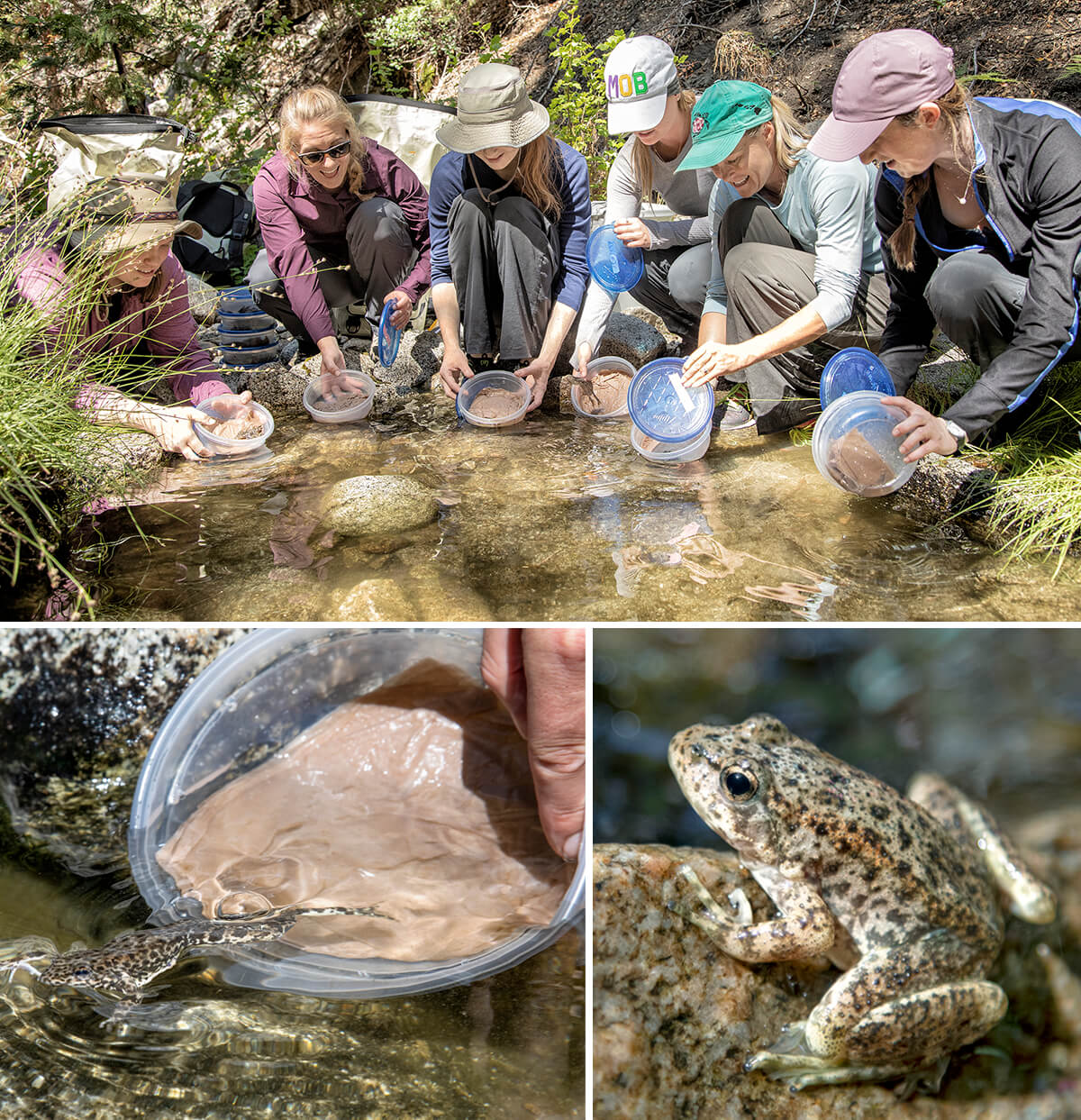
YOU’RE FREE!
It’s a joyous event for researchers releasing mountain yellow-legged frogs back into their historic range. The dappled frogs seem to know just what to do, including blending in with their habitat.
A generous grant from the Schwemm Family Foundation allowed the team to purchase a handheld PIT tag reader, which looks like something a beachcomber would use to find treasures buried in the sand. It is a handy, noninvasive tool the team can use to detect the tiny, cryptic creatures in the water. “You can scan them and know who they are—their parents, their history, when they were released—before you recover them,” Talisin explained. Additionally, the research team implanted radiotelemetry transmitters (funded by a grant from Amphibian Ark) into a group of 21 adult frogs. These units are a bit larger than the PIT tags and are surgically implanted. These transmitters will allow researchers to find frogs up to 150 meters (164 yards) away and document the frogs during their annual winter hibernation cycle. “It’s been a big year for technology with the frog project,” she added. Gives new meaning to leap year!

Tracking Where You Cannot Follow
Imagine it’s 30 degrees below zero, the wind is howling, and you’re going to take a swim in the Beaufort Sea. Oh, and you’re wearing an all-important GPS collar to help researchers save your species. Climate change is causing rapid changes to the Arctic environment, which impacts polar bears—they hunt seals from the now-vanishing sea ice. Scientists are racing to better understand the impact of our transforming world on these bears.
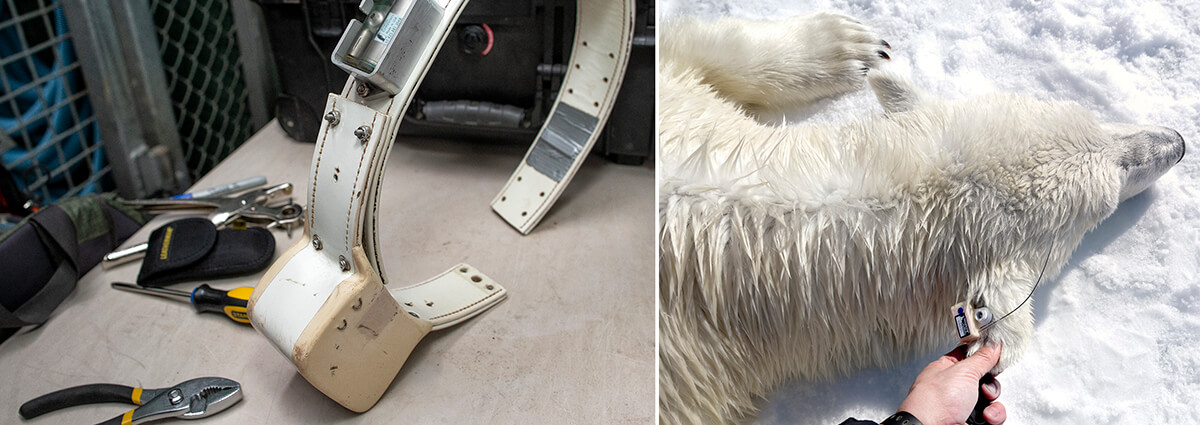
ACCELERATING ACCESSORIES
Tracking collars for polar bears are sturdy, waterproof technological wonders that provide scientists with information about how female bears use their environment. Ear tag trackers are being developed that would reveal the habits of male bears, as well.
Only female polar bears can be monitored with traditional tracking collars, because a male bear’s neck is wider than its head, so the collar slips off. Sensors mounted on the radio collars send signals via satellite that are used to track a polar bear’s movements. “GPS satellite tracking lets us know where the bears are, but we need more details,” said Megan Owen. She described other sensors that are typically added to the collar, which note light levels, ambient temperature, and activity levels. There’s even a conductivity sensor that detects whether the bear is in water or not. But what Megan would really like to see added is an acoustic sensor. “All bears—except pandas—make a humming sound when nursing, so an acoustic sensor could tell us how much nutrition the cub or cubs are getting.”
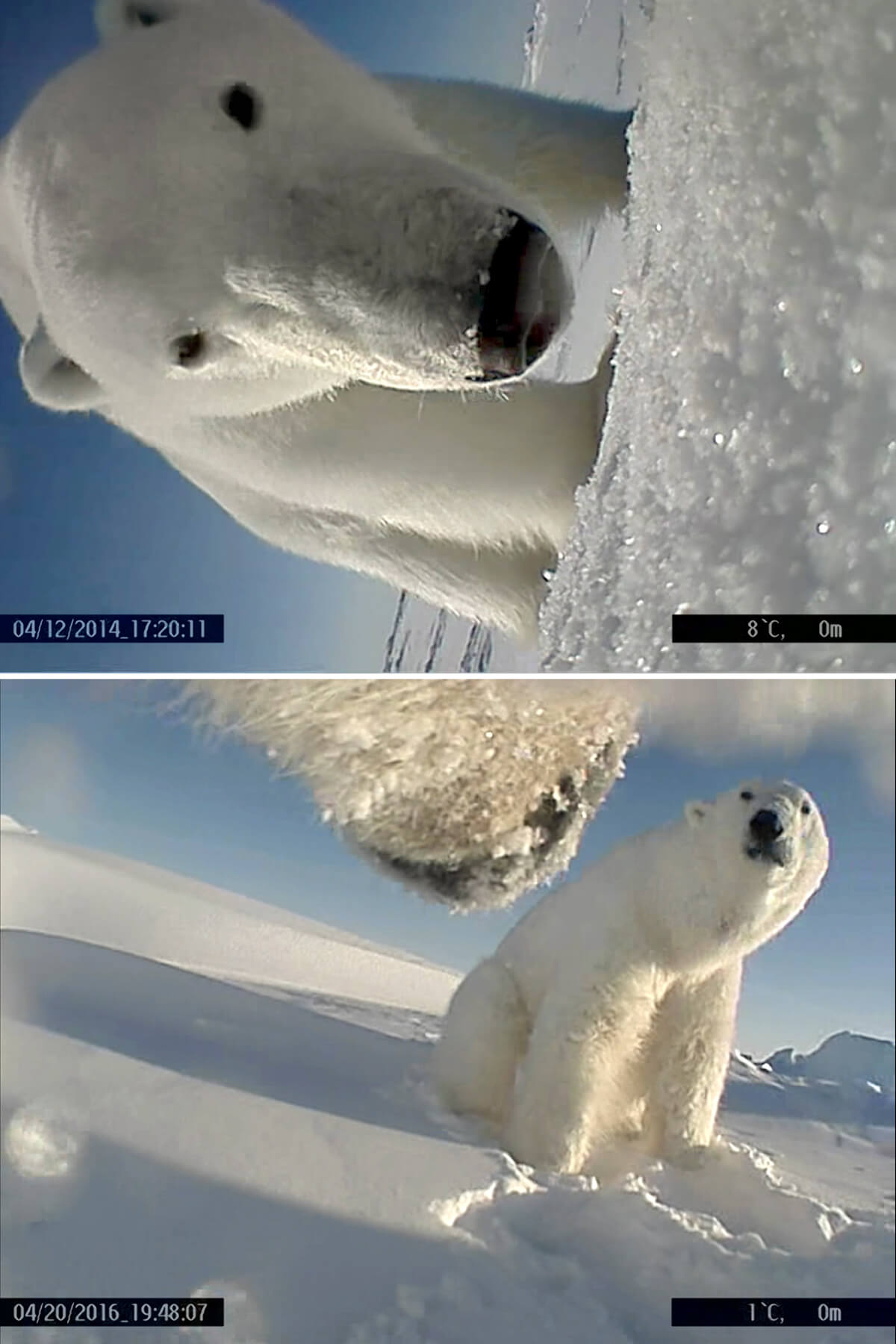
NICE TO MEET YOU
Some collars also have a camera attached, providing a unique perspective on polar bear life! (Photos courtesy of USGS)
A polar bear collar has a durable, waterproof housing to protect the sensors from salt water, ice, and snow. Most of them fall off the bear after a certain length of time, and scientists retrieve them to get the data. While the bear is large enough to wear a substantial collar, there is still a dash to make a smaller, more efficient battery. “No one wants to encumber the animal,” said Megan.
Advances are being made in ear tags, which could also be placed on male bears. Being significantly smaller, they do not last as long or provide as many coordinates per day, but they would still fill in gaps in our understanding of polar bears. “Polar bears roam over vast areas of the Arctic sea ice, so we cannot follow them as they range,” said Megan. “But these tracking devices are giving us incredible glimpses into the bears’ life.” And uncovering the mysteries of the great ice bear is more urgent than ever.
Photography by: Tammy Spratt/SDZG Photographer; Jenn Beening/SDZG Staff; Colleen Wisinski/SDZG Staff; Ken Bohn/SDZG Photographer; Megan Owen/SDZG Staff.


